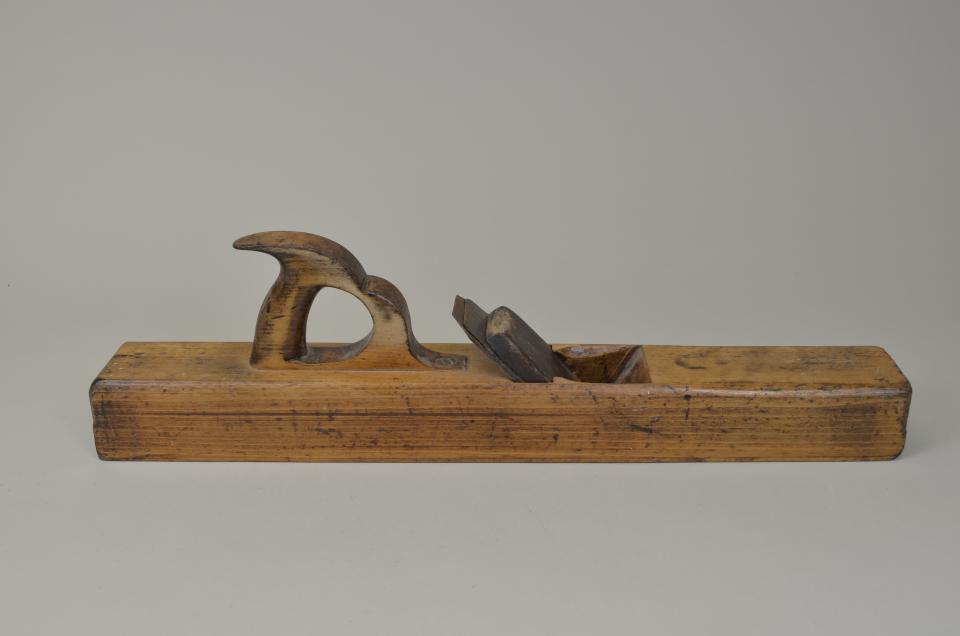
L: 55.6cm W: 7.0cm H: 15.3cm
a- L: 55.6cm W: 7.0cm H: 15.3cm
b- L: 10.3cm W: 5.8cm H: 1.4cm
c- L: 14.6cm W: 5.6cm H: 1.5cm
A wooden jointer plane consisting of 3 parts.
a- The body is a rectangular prism made of light brown hardwood. The throat cuts diagonally through the body just ahead of centre. There is a wooden closed-grip handle on the top of the body behind the throat. The sole is flat. A stamp on the toe reads "G. G.". The same stamp is found on the heel.
b- The wedge is made of the same hardwood as the body. It is wide-set and tapers slightly toward the bottom. The top corners are chamfered and the top edge is flat. The bottom edge splits into two short prongs.
c- The iron is made up of two wide-set metal strips secured by a slotted screw. The top edge is flat with chamfered corners. The smaller strip has rounded top corners. The bottom edge is flat with square corners. There is a stamp on the front side that reads "SHEAFWORKS".
The jointer plane, also known as the try plane or trying plane, is a type of hand plane used in woodworking to straighten the edges of boards in the process known as jointing, and to flatten the faces of larger boards. Its long length is designed to 'ride over' the undulations of an uneven surface, skimming off the peaks, gradually creating a flatter surface. In thicknessing or preparing rough stock, the jointer plane is usually preceded by the fore plane or jack plane and followed by the smoothing plane. The use of the name jointer plane dates back to at least the 17th century, referring to the process of readying the edges of boards for jointing. The terms try plane, trying plane, and trueing plane have been in use since at least the 19th century. As with other hand planes, jointer planes were originally made with wooden bodies. But, since the development of the metal-bodied hand plane at the end of the 19th century, wooden-bodied jointers have been largely superseded. Metal-bodied planes are heavier, which is particularly noticeable for planes as large as jointers. This can make metal-bodied jointers more tiring to use for extended periods of time.
